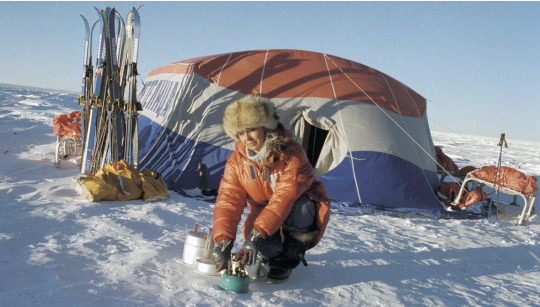adult | I'm the worst man ever invented but, of course, my breasts are sublime
Don't wanna be here? Send us removal request.
Text

A Winding Stream Somewhere in Mt. Rainier National Park, WA [4672x5840][OC] - Author: Elliot-Fletcher
2K notes
·
View notes
Text
2 Weeks To Go! 2/3 Funded!
Hey y'all! As of today (July 1), it is officially 1 month to the deadline to raise fees for my degree and move! Thank you, as ever, for all you've done for me. My campaign is 66% funded, nearly 2/3rds!
You might know me now as Story, but some of you will remember me better as Vampireapologist & Mallaidh-Anne.


You might also remember that I am a fisheries biologist with a background in research-writing and museum management.
If you haven't seen my prior posts on the topic: I am thrilled to have accepted an offer to attend University College Dublin’s School of Irish, Celtic Studies and Folklore this autumn (2025).
My studies have been focused on the inextricable link between culture and ecology.
Although I graduated at the top of my class in my undergraduate degree, and I happily earned a small scholarship through community service work in 2022, I cannot afford the cost of attendance on my own. I am therefore turning to my community for support.
I do not ask lightly, and it is only after many months of encouragement and insistence of friends and family that I am taking this step. If you would like to know more about my program, my career, and what I am asking, please follow the link here:
Whether you can or choose to support me through this campaign, thank you for all of your kind words and thoughts!!!
1K notes
·
View notes
Text

On May 18, 1980, Richard “Dick” Lasher shot this epic photo of the eruption of Mount St. Helens. Lasher was forced to abandon his Pinto and flee the giant plume of ash on his motorcycle. Lasher survived.
"It was my fifteen minutes of fame."
4K notes
·
View notes
Text
In the 1830s, such books were very popular, as they showed the reader amazing 3D projections.
5K notes
·
View notes
Text

Corner of a hand-stitched sail from the 1800s
81 notes
·
View notes
Text
by Elena Kryvoshei, Mon 30 Jun 2025
Scientists have developed recyclable solar cells that use only water, eliminating the need for toxic chemicals and potentially addressing a major environmental challenge in the solar industry.
Swedish researchers have developed a method for fully recycling advanced solar cells using only water, potentially addressing a significant environmental challenge as the solar industry continues its rapid expansion.
The new technique could help address concerns about waste from perovskite solar panels, which are more efficient than traditional panels but difficult to recycle.
Solar energy has experienced significant growth in recent years, with the global market expanding at a rate of around 24% annually over the past decade. This growth is expected to continue, with industry estimates suggesting the market will triple in size by 2028.
Part of this expansion will come from newer perovskite solar cells, which can convert up to 25% of solar energy into electricity. Traditional silicon-based cells typically achieve an efficiency of only 15-20%.
However, these high-performing perovskite cells have presented a significant recycling challenge. Until now, breaking them down required toxic chemicals that could harm the environment.
Researchers from Linköping University in Sweden have published findings in the journal Nature that could change this situation. They’ve developed a water-based method that completely breaks down perovskite solar cells without using harmful chemicals.
“We can recycle everything—covering glasses, electrodes, perovskite layers, and also the charge transport layer,” said Xun Xiao, a postdoctoral student and co-author of the research.

Professor Feng Gao, another paper co-author, emphasized the importance of considering recycling from the start: “If we don’t know how to recycle them, maybe we shouldn’t put them on the market at all.”
Instead of toxic chemicals, the researchers created a water-based solution containing three additives: sodium acetate, sodium iodide, and hypophosphorous acid.
Each ingredient serves a specific purpose in the recycling process. Sodium acetate helps separate the cell’s materials, while sodium iodide helps reform the perovskite crystals so they can be reused in new solar cells. Hypophosphorous acid keeps the solution stable.
The process involves heating water to 80 degrees Celsius (176 degrees Fahrenheit) for 20 minutes before submerging the solar cell. After the cell breaks down, the team separates the recycled perovskite crystals using a centrifuge spinning at 5,000 rotations per minute for three minutes.
The most impressive aspect of this breakthrough is that solar cells made from these recycled materials maintain the same efficiency as the original cells. This means manufacturers could potentially reuse the same materials multiple times without losing performance.
This development addresses a key sustainability concern in the solar manufacturing industry. While solar power itself produces clean energy, the production of solar panels requires the mining of critical minerals from around the world. These materials are often difficult to source and have their own environmental impact.
The ability to recycle these materials multiple times could reduce the need for new mining operations and lower the overall environmental footprint of solar energy.
The creation of fully recyclable solar cells could also help bring down solar energy prices in the long term. By reusing expensive materials instead of constantly mining new ones, manufacturers might reduce production costs, making solar power even more competitive with fossil fuels.
Currently, the solar industry faces significant recycling challenges. According to the International Renewable Energy Agency, only about 10% of solar panels worldwide are recycled properly. The vast majority end up in landfills where their valuable and sometimes toxic materials can’t be recovered.
By 2050, experts predict that solar panel waste could reach 78 million tons globally. This makes the development of recyclable solar cells increasingly urgent from both environmental and economic perspectives.
The cost difference between traditional recycling methods and this new water-based approach is substantial. While conventional recycling of perovskite solar cells requires expensive chemical solvents and specialized disposal processes that can cost up to $25-30 per panel, early estimates suggest the water-based method could reduce these costs by 60-70%.
Solar panel prices have already dropped significantly in recent years, helping drive the industry’s growth despite political opposition from some quarters. The Trump administration had voiced opposition to solar development, but the industry continued to expand regardless.
Perovskite solar cells represent the next generation of solar technology due to their higher efficiency. They can convert a quarter of the sun’s energy that hits them into usable electricity, significantly better than most panels currently on rooftops around the world.
Their main drawback has been the end-of-life disposal issues. Unlike many other products, solar panels contain specialized materials that need proper handling when they’re no longer useful.
The water-based recycling method developed by the Swedish researchers represents a potential solution to this problem. By making the entire recycling process less toxic and more efficient, they’ve addressed one of the few remaining environmental concerns about solar energy.
The regulatory landscape for solar panel recycling varies widely across the globe. The European Union leads with its Waste Electrical and Electronic Equipment (WEEE) Directive, which requires manufacturers to take back and recycle solar panels at the end of their life.
In the United States, most states lack specific regulations for solar panel disposal; however, California has classified them as universal waste, requiring special handling. China, the world’s largest solar producer, has recently begun developing national standards for recyclable solar cells and the disposal of solar panels.
If scaled up successfully, this technology could help ensure that the growing solar industry remains truly sustainable throughout the entire lifecycle of its products.
The findings come at a critical time for renewable energy. As more countries and companies commit to reducing carbon emissions, the demand for solar power continues to increase. Ensuring this growth occurs in an environmentally responsible manner is crucial for effectively addressing climate change.
By developing methods to recycle the most advanced solar cells fully, researchers are helping ensure that clean energy solutions don’t create new environmental problems along the way.
25 notes
·
View notes
Text

many on here need to be learning this lesson
59K notes
·
View notes
Text
WHAT ARE YALL READING RN you must tell me
#Fowles’ the magus#I haven’t decided if there’s anything of the psychological thriller worth salvaging out of the general mess that comes from#an over reliance on Jung and misogyny#it retains some erotic value but it might achieve its goals of psychosexual delirium if authored by someone other than a cis Englishman#(or rather it’s failing to be an enjoyable read and it may fail to deliver on its literary premise too)
8K notes
·
View notes
Text
Mark Hillsdon, 20 Jun 2025
Conservationists in Argentina’s Patagonia region have helped save the country’s most threatened amphibian, the El Rincon stream frog, a species whose entire existence centers on a single warm stream in the Somuncurá Plateau.
To restore the frog population, researchers removed invasive trout from the stream, bred hundreds of frogs in captivity and released them in the wild, and worked with ranchers to keep cattle out of the frogs’ habitat.
Researcher Federico Kacoliris, who mobilized the conservation movement around the species, recently received a Whitley Award, known as the “Green Oscars,” which will help his foundation expand protections in the area..
24 notes
·
View notes
Text
It's a shame we can't use the word "ejaculate" to mean speak suddenly any more, because the alternative, "blurt," is terrible and I refuse to use it.
335 notes
·
View notes
Text








more pics from the soviet metelitsa ski team in 1988. they covered 1,420 km of antarctic tundra in 57 days, while most of the women were in their 50s!
3K notes
·
View notes
Text
Hi my name is Ozy'mandias, King of Kings and I have two vast and trunkless legs of stone and a frown and wrinkled lip and a lot of people tell me I look like the Younger Memnon (a/n if you don't know who he is get da hell out of here!). I'm a statue but my visage is shattered and lies half sunk on the sand. I’m also a colossal wreck, and I stand in the desert of an antique land where I’ve been for a really long time (I’m ancient). I’m a lifeless thing (in case you couldn’t tell) and I wear mostly the passions the sculptor read and stamped on me, which yet survive. I love sculptors and I get all my expressions from there. For example today I was wearing a sneer of cold command and a black leather miniskirt, pink fishnets and black combat boots. I was wearing black lipstick, white foundation, black eyeliner and red eye shadow. I was standing in the desert. The lone and level sands were boundless and bare, which I was very happy about. A lot of mighty looked upon my works and despaired. I put my middle finger up at them.
5K notes
·
View notes
Text
Washington state bans the sale of common ivy varieties starting in August
Read more at: https://www.thenewstribune.com/news/state/washington/article310485330.html#storylink=cpy Great news finally tackling this destructive invasive species!
113 notes
·
View notes

